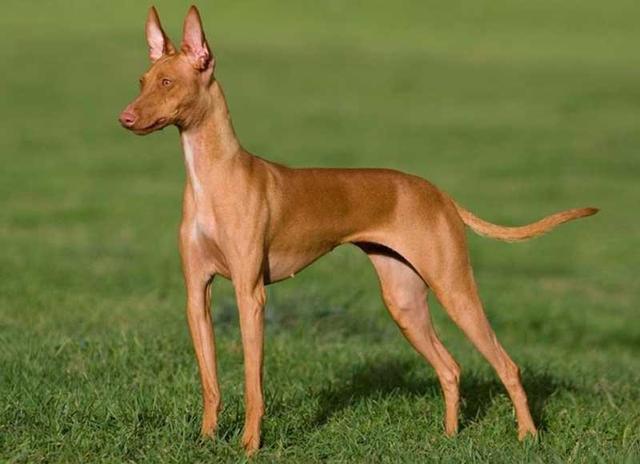Pharaoh Hound
IUCN
LCBasic Information
Scientific classification
- name:Pharaoh Hound
- Scientific Name:Cobot Feller, Harrier, Pharaoh Hound
- Outline:Carnivora
- Family:Canidae
Vital signs
- length:95-115cm
- Weight:20-25kg
- lifetime:12-14year
Feature
The Pharaoh Hound is the national animal of Malta and was traditionally used to hunt rabbits in the rocky terrain of the Maltese Islands.
Distribution and Habitat
Originated from ancient Egypt
Appearance
The ears are of medium size, flexible, and stand erect when alert. The neck is graceful, long, thin, muscular and slightly curved. The eyes are oval and set very closely together, which is essential for a sighthound to have excellent binocular vision. The shoulders and back lines are very smooth, the limbs are strong, the tail is soft, the hair at the base of the tail is dense, and it gradually tapers to the tip of the tail. The eyes are amber in color, the eye sockets are sunken, the eyes are sharp and alert, the nose is flesh-colored, blending with the color of the coat, and it will turn red when the dog is excited. The long and thin face looks well-defined, the short, shiny but slightly rough coat needs little combing, the toes are white, and the feet are strong and powerful.
Details
Pharaoh Hound (English name: Pharaoh Hound): is a medium-sized dog. The Pharaoh Hound is the oldest and apparently the most honorable dog breed in history. The Pharaoh Hound guarded the tombs of the ancient Egyptian pharaohs with its beauty and elegance.

Preserved animal bones indicate that hunting dogs similar to the Pharaoh Hound, one of the oldest dog breeds, have lived in the Middle East for at least 5,000 years. The Pharaoh Hound is generally believed to have originated in Egypt. As early as 4,000 years ago, dog breeds with extremely similar appearances appeared in ancient Egyptian portraits, and their traces can also be found in ancient Egyptian documents and even hieroglyphs. They were once the favorites of ancient Egyptian kings. Tutankhamen, the Egyptian king in the 14th century BC, favored a Pharaoh Hound. After the dog died, he even ordered that the dog be wrapped in fine linen, smeared with perfume, and placed in a coffin so that it could gain glory in front of God. You can imagine the noble status of the Pharaoh Hound at that time. Later, the Pharaoh Hound was brought to the island of Malta by Phoenician merchants. Although it has been bred and evolved for more than 2,000 years, this breed still retains its original species and the appearance of its Egyptian ancestors.
After the Roman invasion of Egypt 2,000 years ago, similar dogs spread throughout the rest of the Mediterranean. They may have been brought by the Phoenicians and Carthaginians through trade. The Pharaoh Hound has survived so well that it lives as a distinct breed in relatively isolated places such as the Maltese Islands, the Balearic Islands and Sicily, but can also be found in mainland France and Italy. Perhaps because of their gorgeous, red coat, or because they were not discovered until the 1960s, the Pharaoh Hound has become the most popular breed of the "Egyptian Hunting Dog". Unlike the sire dog, which can only hunt by sight, the Pharaoh Hound can hunt by sight, hearing and smell.
In Malta, the Pharaoh Hound became an expert at hunting rabbits, so they are also called harriers. In 1979, the Maltese government declared the breed the national animal and issued a silver coin with its portrait in it as a commemoration. It was introduced to the United Kingdom in 1968 and officially recognized by the American Kennel Club (AKC) in 1983. One of the most distinctive features of the Pharaoh Hound is its beautiful amber eyes. When they are happy or excited, their noses and ears turn dark rose. In a letter from the ancient Egyptian era, they were described as having a red glow on their faces, like gods. With its high speed, alert mind, agility, and keen eyesight and sense of smell, the Pharaoh Hound is an excellent hunter.
Protect wild animals and eliminate game.
Maintaining ecological balance is everyone's responsibility!








